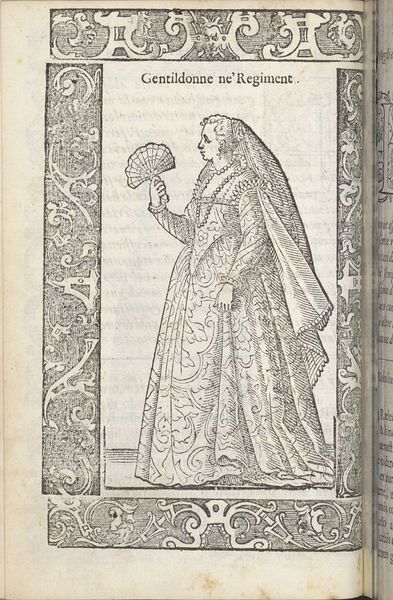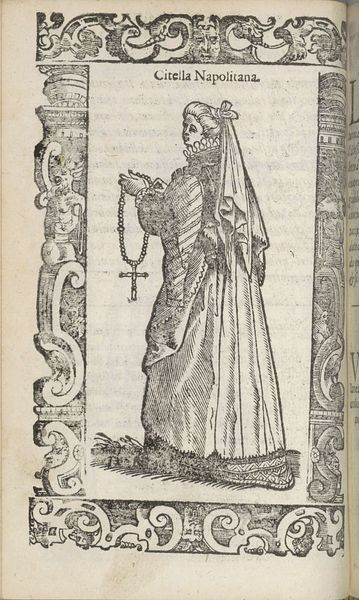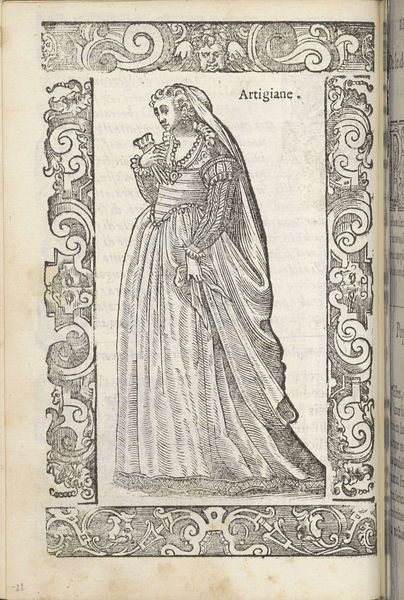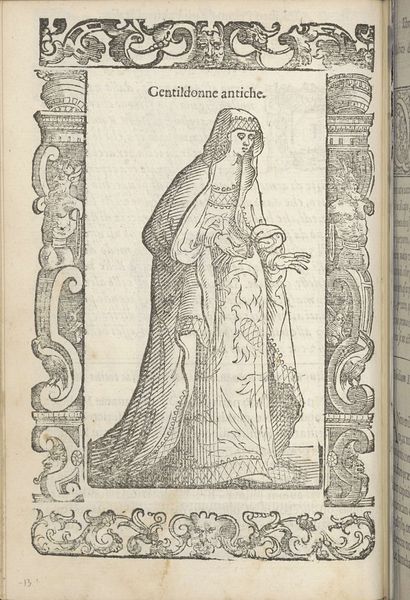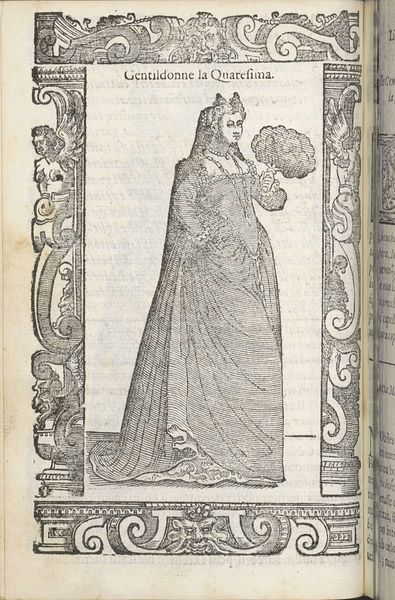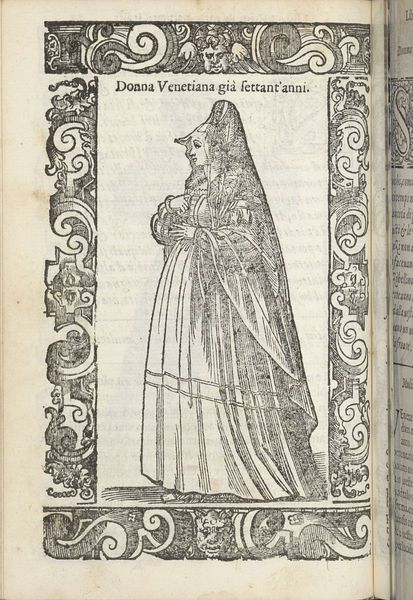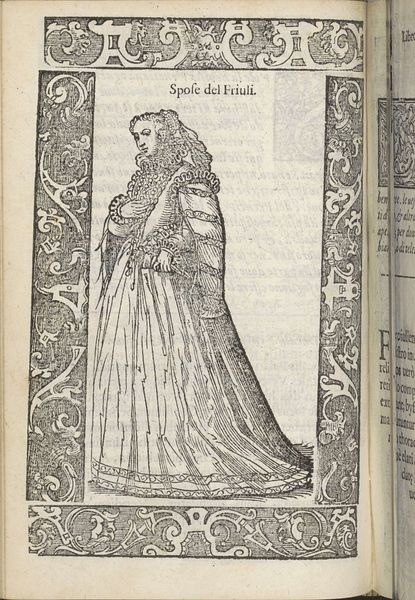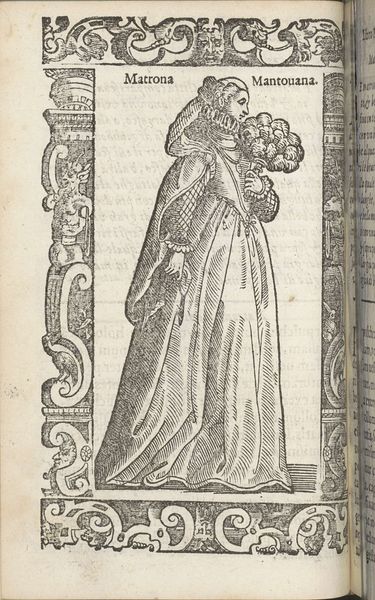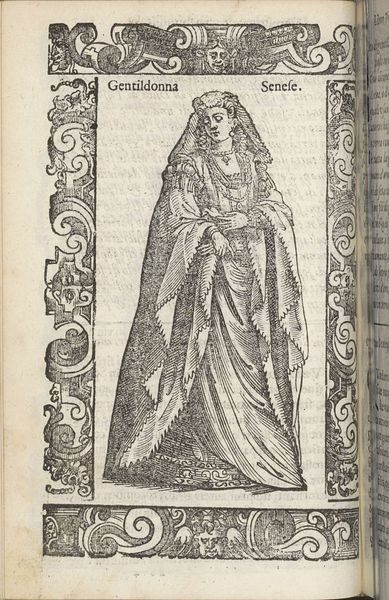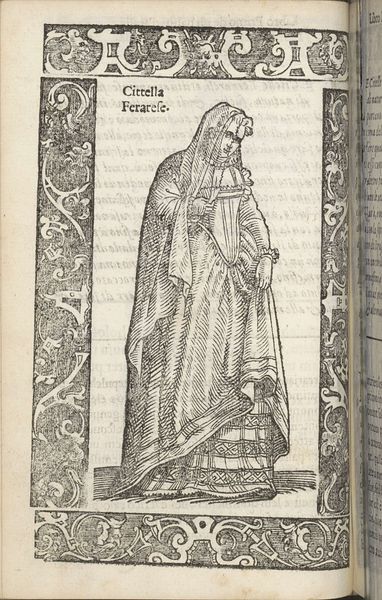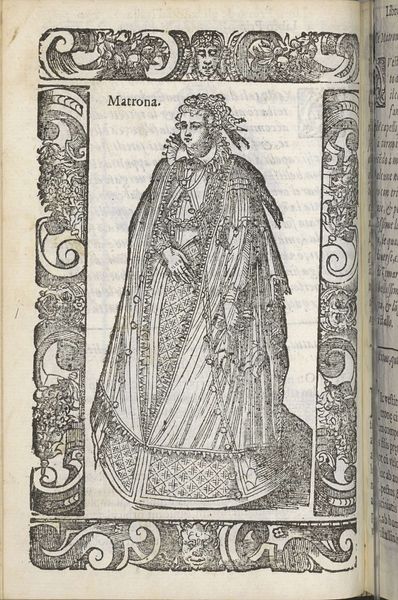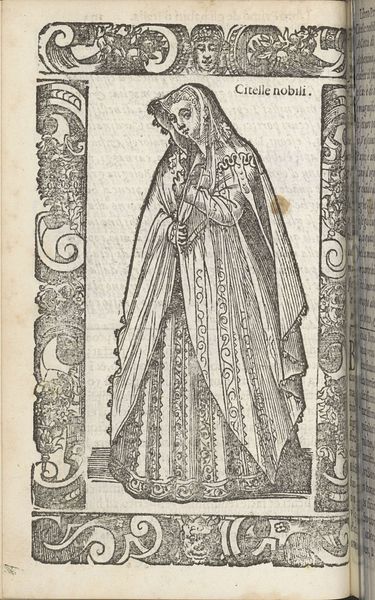
print, paper, ink, engraving
#
portrait
# print
#
mannerism
#
paper
#
ink
#
engraving
Dimensions: height 167 mm, width 125 mm
Copyright: Rijks Museum: Open Domain
Curator: Looking at this 1598 engraving entitled "Matrona padovana" by Christoph Krieger, I'm struck by the sharp contrast and detailed textures. It gives it a very strong graphic presence. What's your initial reaction? Editor: The immediate impression is one of reserved opulence, which to me seems appropriate to a print depicting a matron of Padua in the late 16th century. It makes me think about what exactly her social status means. Curator: Krieger has used the engraving medium to great effect, creating different linear densities that simulate tonal variations and textures, like the patterned fabrics. It’s all ink and paper, of course, transformed through the labor-intensive engraving process into what we might term "high art." But consider that these kinds of images were often intended as patterns for craftspeople; how do we negotiate this ambiguous status? Editor: Agreed, and the very act of creating reproducible images for pattern books complicates notions of unique artistic genius and the art market’s obsession with such. Though, undeniably, within the composition, the vertical emphasis, the contained yet elaborate ornamentation, and even her demure pose coalesce to create a picture of controlled elegance. There is a structural integrity here which invites formal reading. Curator: And what do you make of the setting? This woman's identity seems framed by the ornamentation on all sides. We might want to further question the power dynamics inherent in representing someone from a specific region within an early book that’s then disseminated widely to construct a shared "European" identity for readers. Editor: Very true. The image's power arises from its balance and clear lines—but I acknowledge the visual style could be an ideological means to propagate and enforce particular societal ideals tied to the place and identity indicated in the title. Curator: I agree, but the production also signifies power through commerce, industry and widespread distribution through which perceptions about regional and personal identities were made available in an accessible commodity form. Editor: I think that's insightful and gives more nuance to how one might begin to understand the subject depicted and its own unique historical context as a print within a book. Curator: A look into printmaking, commerce, labor and identity; there’s much to appreciate about the rich context surrounding this engraving.
Comments
No comments
Be the first to comment and join the conversation on the ultimate creative platform.
